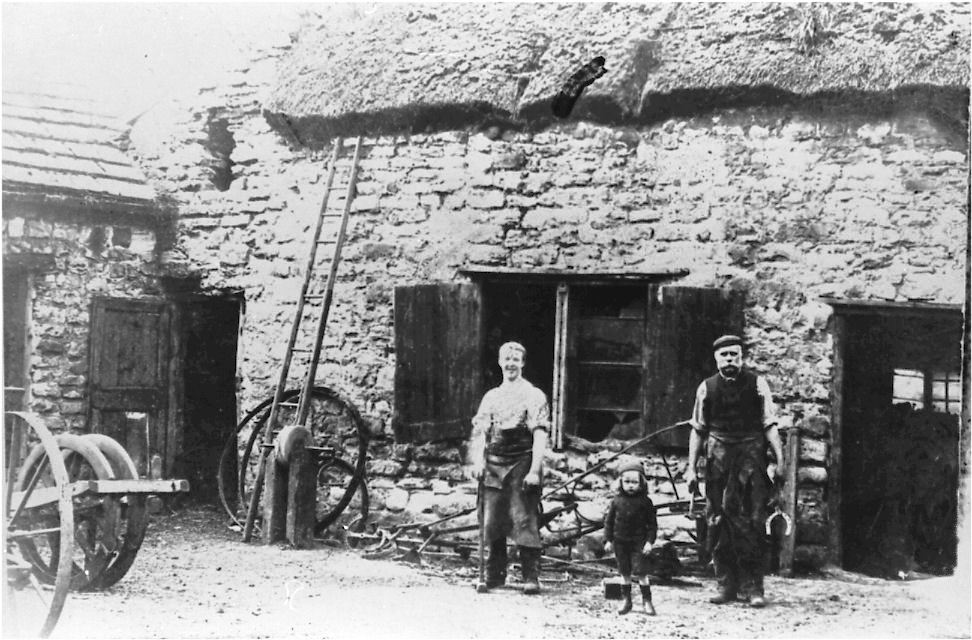
William III (on the right) outside the Smithy

| "William Collett of Barwick was a member of the Wesleyan Methodist Society for upwards of 60 years. He filled the office of class leader and Sunday School Superintendent and was regular and efficient in the discharge of his duties until compelled to resign on account of deafness and failing health. During his latter days in great suffering and weakness he gave clear testimony to the sustaining power of divine grace - in fact he lived in anxious expectation of the Master's coming and in constant readiness for it." |
JOYCE HIDDEN (née COLLETT) |